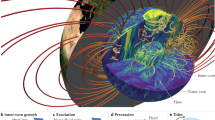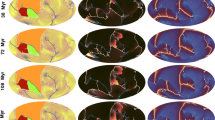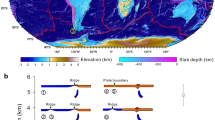Abstract
IT has become clear in recent years that there is a formidable case for continental drift. The most convincing single piece of evidence comes from palæomagnetism1, but this is amply supported by a wealth of geological evidence. The only adequate mechanisms for continental drift which have yet been suggested are based on the activity of convection currents in the Earth's mantle.
This is a preview of subscription content, access via your institution
Access options
Subscribe to this journal
Receive 51 print issues and online access
$199.00 per year
only $3.90 per issue
Buy this article
- Purchase on SpringerLink
- Instant access to full article PDF
Prices may be subject to local taxes which are calculated during checkout
Similar content being viewed by others
References
Runcorn, S. K., (ed.), Continental Drift, 1, 117 (Academic Press, 1962).
Runcorn, S. K., Nature, 193, 311 (1962).
Chandrasekhar, S., Phil. Mag. 44, 233, 1129 (1953).
Macdonald, G. J. F., Researches in Geochemistry, edit. by Abelson, P. H., 476 (Wiley, 1959).
Dietz, R. S., Nature, 190, 854 (1961).
Gastil, G., Amer. J. Sci., 258, 1 (1960).
Author information
Authors and Affiliations
Rights and permissions
About this article
Cite this article
BOTT, M. Convection in the Earth's Mantle and the Mechanism of Continental Drift. Nature 202, 583–584 (1964). https://doi.org/10.1038/202583b0
Issue date:
DOI: https://doi.org/10.1038/202583b0
This article is cited by
-
Convective Self-propulsion of Continents
Nature (1967)



